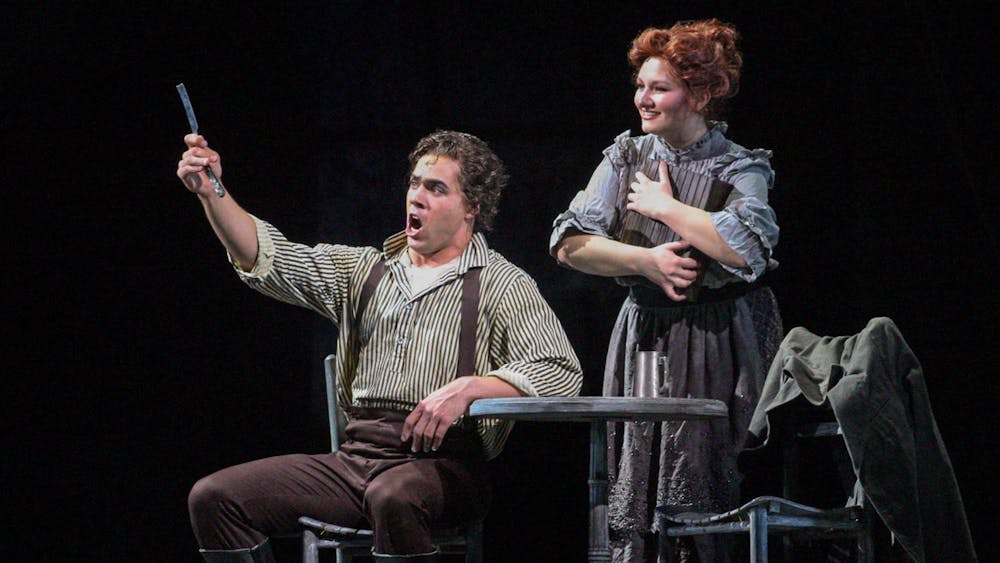The Elizabeth Sage Collection, a costume collection at IU, preserves clothing that traces the evolution of fashion. Elizabeth Sage founded the collection in 1937, when she was appointed IU's first professor of clothing and textiles. The collection is located off-campus in a private warehouse. Items in the collection are never worn again but are used in certain exhibitions for perspective. \nThe Sage Collection is a historic collaboration, consisting of more than 17,000 artifacts representing the evolution of styles from 1765 to modern day. The collection features men's, women's and children's clothing. It also includes a large array of fashion books, articles and magazines such as Vogue, with issues dating back to 1920. \nThe collection is limited to dress and adornment of Western fashion. It doesn't include ethnic or folk dress. Military and sports items are also preserved there, demonstrating changes and development in all forms of dress from uniform and occupational or casual wear to glamorous couture evening wear. \nWorks by prestigious designer names, such as Balenciaga, Dior and Bill Blass, are preserved in this exposition. Although high- profile designs play a major part in the Sage Collection and are undoubtedly the most recognized, the collection illustrates an accurate portrayal of Western fashions that goes beyond the big-name designers to include down-to-earth looks worn by the average person at each time period. \nThe Sage collection consists of two parts -- one part is dedicated to student study, while the other museum-like collection carefully protects and stores fashion artifacts from around the world. Apparel merchandising and interior design majors use the articles dedicated to the study program to learn about costume history and advances in design and techniques. This separate work-study collection has duplicates, which can be seen at Memorial Hall. The MAC rents costumes for its performances, and students and curators from the Sage Collection make replica costumes to be put into the study collection.\nGraduate students who have an interest in costume history work at the Sage collection to gain experience on what would be the appropriate preservation methods for various designs. The same protection tactics students learn and use at the Sage Collection are required in museums. \n"I help facilitate expositions and work with other institutions like Monroe County Historical Society," said Petra Slinkard, a graduate student who works at the collection. \nEvery item preserved in the collection is a donation. Elizabeth Sage's personal collection donated in 1937 set the basis for the function and was kept alive and up-to-date with added donations throughout the decades, allowing for visual perspectives of life and styles of previous times. Curator Kathleen Rowold and Assistant Curator Kelly Richardson frequently accept donations, which usually come from socialites or people who are prominent in in fashionable society, designers and museums. They then select which items they will add to the collection and which items will be given to the work study program. \n"Most donations come from socialites," Richardson said. "Some people just donate to get tax write-offs." \nThe curators are now processing their largest donation ever. The donation is from Chessy Rayner, a friend and interior designer of Bill Blass. Rayner's sister donated to the Bill Blass exhibit and gave her clothing to the warehouse, which is 75 percent Bill Blass. \n"She was the first to mix ethnic and army-navy Gap stuff with high-end designs," Richardson said. "Her clothing shows fun and personality." \nThe Bill Blass exhibit took place last year. It was a collaboration of Blass designs held at the IU Art Museum. Students and faculty worked hard to set up the exposition. Graduate students Jessica Rall and Petra agreed the hardest part in preparing for the exhibit was layering the mannequin forms to properly fill out the clothing in which they will be placed. \n"I had an interest in costume history. Through Costume Construction Technology, I was able to get into it, and the Blass exhibit was at that time" said Rall. "Being part of such a big production helped me realize that this is what I want to do." \nRall works at the Sage Collection and is also a wardrobe assistant at the M.A.C. \n"I make the wigs for the opera," Rall said. "It's good to know about costume history and apply it to theater."\nClothing must be kept safely preserved by someone with skill in costume preservation to keep the clothing protected correctly. \n"Everything here will never be worn again. We have been asked to do fashion shows, but we don't do that here. This is more of a museum exhibition," Richardson said. "We have items here worth thousands. We use acid-free materials to ensure protection. Fur is segregated because it is most vulnerable to attack." \nItems from before 1940 are stored flat and packaged on shelves, labeled neatly and organized with respect to the materials used.\nIn honor of Girls Sports Week, the Sage Collection presented a fashion show Feb. 6 as part of an alliance with Bloomington museums. The show featured the uniforms of former IU athletes. The sports articles and uniforms chosen for use in the show demonstrated how drastically style in sportswear has changed throughout time. \nA 1910 blue bathing suit, which covers a large portion of the body and comes with bloomers, which was the standard, was on display. The collection shows how bathing suits have evolved from early suits, which were designed for the sole purpose of concealing the body, to the modern-day tiny Speedos and sleek and sexy bikinis. \nThe Sage Collection is thorough in representing high designer and popular fashion trends in our culture. The collection is particularly specific in its focus on representing Indiana styles by including IU sportswear as well as old Indiana traditions in dress. \nAccording to Rowold, senior cords were a phenomenon popular in Indiana high schools and colleges from the 1920s to the 1970s. During this time frame, students would decorate white pants and skirts with anything related to their high school. Attire would be covered with luminous beaded designs reflecting aspects of their hometown and school. The Senior Cords collection is also referred to as "the great unwashed" because the apparel was so carefully assembled with delicate items and materials that it could not be washed. The Sage Collection contains a wealth of pieces made during the era before this Indiana fashion custom died out. \nThe Sage Collection will stage its next exhibit in the fall. It will be in collaboration with the Kinsey Institute and the Mathers Museum. The tentative theme and basic concept of the show will be "Fashion, Function, Fantasy and Fetish." The Sage Collection was asked to participate to explore ideas of modesty versus immodesty in dress and adornment of Western fashion.\n"The idea of the show is to contrast old styles with modern looks and further contrast concealment versus exposure," Rowold said. "The concept was developed by Kinsey and Mathers to look at different cultures and the way they cover and reveal their bodies." \nRichardson said by storing apparel in the fashion warehouse, the Sage Collection requires tedious labor and extensive time to accomplish a museum-style exhibition, which is properly organized and catalogued while being informative and entertaining. \nRichardson also emphasized the work put into the collection and said curators and graduate students are constantly working to ensure protection of materials. Richardson also said students` write regular condition reports, tend to legal elements of costume preservation and supply IU's Apparel Merchandising and Interior Design program with study useful tools.
Students learn costume history
Elizabeth Sage Collection preserves historic clothing
Get stories like this in your inbox
Subscribe





